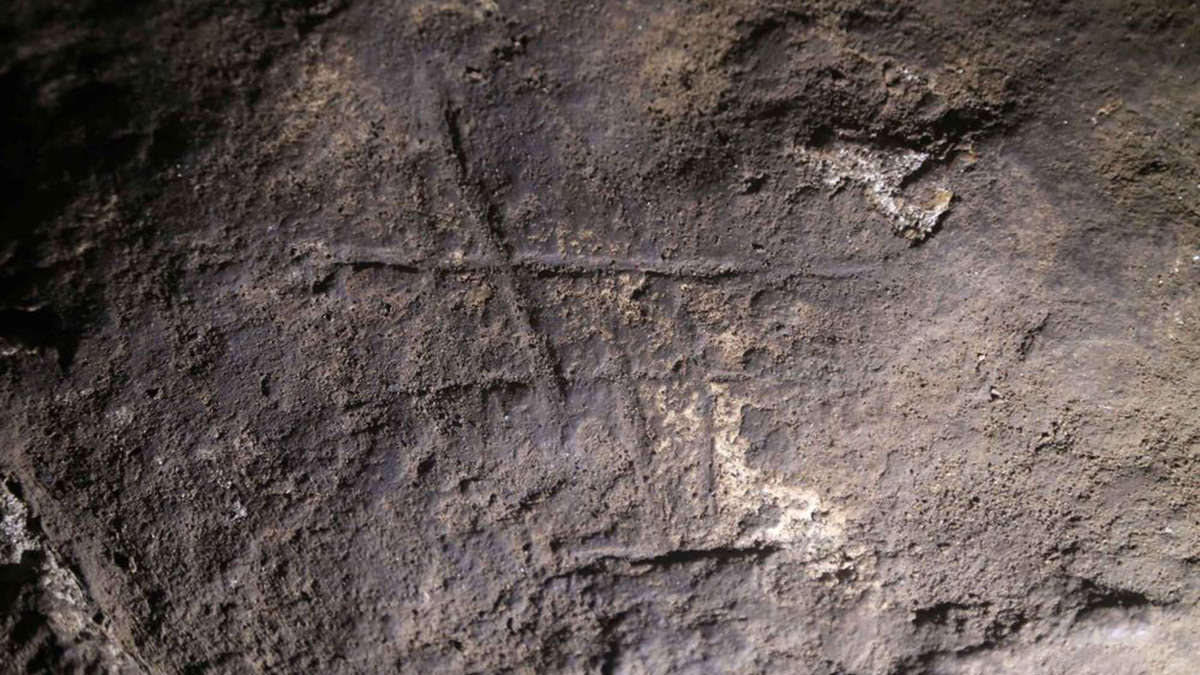Gorham’s Cave is a cave in Gibraltar most famous for its archaeological riches. Its excavation has provided clear evidence of Neanderthal occupation, spanning over 100,000 years. The Gorham’s Cave Engraving is a criss-cross pattern which was discovered in 2012. It soon caused a sensation as in all probability it was created by a Neanderthal. This suggests that they could create art, an activity regarded as a major cognitive step in the evolution of humankind.
The Key Questions
The Neanderthals were a human species called Homo neanderthalensis, which is now extinct. They are the closest human relatives of Homo sapiens, that is us. Current evidence from both fossils and DNA suggests that Neanderthals and Modern Humans shared a common ancestor. The two species lived alongside each other for a while till Neanderthals became extinct around 40,000 years ago.
There are a few contenders for Neanderthal art like Spain’s El Castillo Cave. However, there is no confirmatory evidence to rule out that it was made by early Modern Humans. Research at Gorham’s Cave all but confirm that this Engraving was made by a Neanderthal. This makes the engraving evidence of Neanderthal capacity for “complex symbolic thought” and “abstract expression”. These abilities have been long believed to be exclusive to Modern Humans.
S1 – Discovery
Gibraltar is a British Overseas Territory located on the Bay of Gibraltar in Europe. Gorham’s Cave is one of the four caves in the Gorham’s Cave complex, a UNESCO World Heritage Site. In 1907, Captain A. Gorham of the 2nd Battalion Royal Munster Fusiliers discovered the cave. He inscribed his name and the date on a wall on the cave. Since then the cave has borne his name. The fact that Neanderthals occupied this cave came to light in the 1950s.
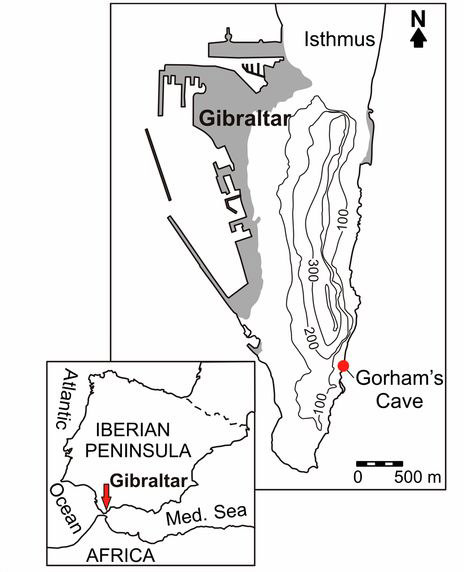
Since 1989, the cave has been excavated as part of the Gibraltar Caves Project, under the supervision of the Gibraltar Museum. It was in July 2012 that the Gorham’s Cave Engraving was spotted by a team of archaeologists led by Prof Clive Finlayson of the Gibraltar Museum. In particular, it was spotted by Francisco Giles Pacheco, director of Archaeological Museum of El Puerto Santa Maria, Spain.
S2 – Description
The engraving consists of an abstract pattern. It is located on a flat area at the center of a 1 meter square natural platform of the bedrock. The platform is elevated 40 cm over the cave floor. The engraving covers an area of around 300 cm square (15 by 20 cm). It comprises primarily of 8 deeply engraved lines forming an incomplete criss-cross pattern. There are five other short thin lines which are engraved in two groups.
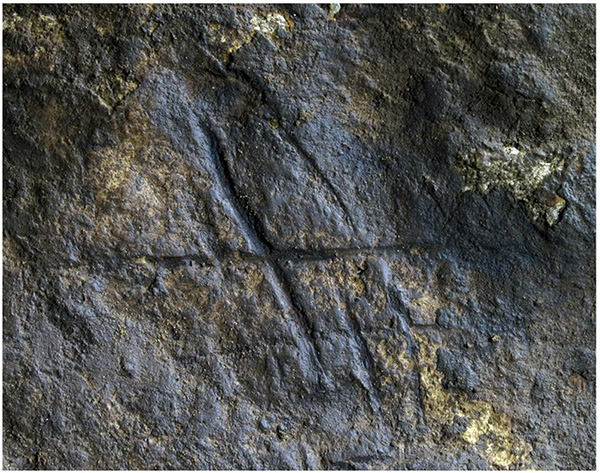
Analysis of the lines suggest that the main 8 lines were produced by carefully and repeatedly passing a pointed tool or a cutting edge into the groove in the same direction. The other 5 lines were created by single strokes with a similar tool. According to experiments, a minimum of 54 strokes were needed to engrave the widest and deepest line (L4). The other main lines required between 4 and 30 strokes.
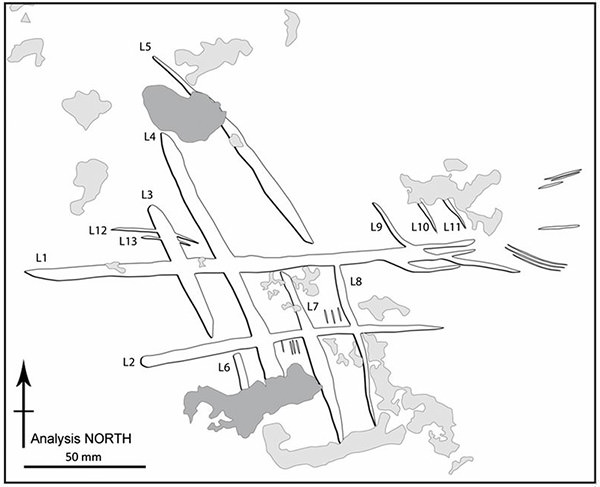
S3 – Age
The Gorham’s Cave Complex contains extensive archaeological deposits that provide clear evidence of Neanderthal occupation over a span of 100,000 years. The Gorham’s Cave has 18 meters of archaeological deposits. Among these 18 meter, there is a level of Mousterian stone tools, representing a Neanderthal occupation between 38,000 and 30,000 years ago. Below this level, there is a layer of much earlier occupation.
The Gorham’s Cave engraving of the criss-cross pattern was once covered by a layer of sediment that contained 294 previously discovered stone tools. These tools are in a style long known as the signature of Neanderthals. Standard techniques have dated these tools at 39,000 years old. This means that the engraving is at least 39,000 years old. Modern humans or Homo Sapiens had not reached the region by that time making the engraving a work of Neanderthals.
S4 – Paleolithic Art Overview
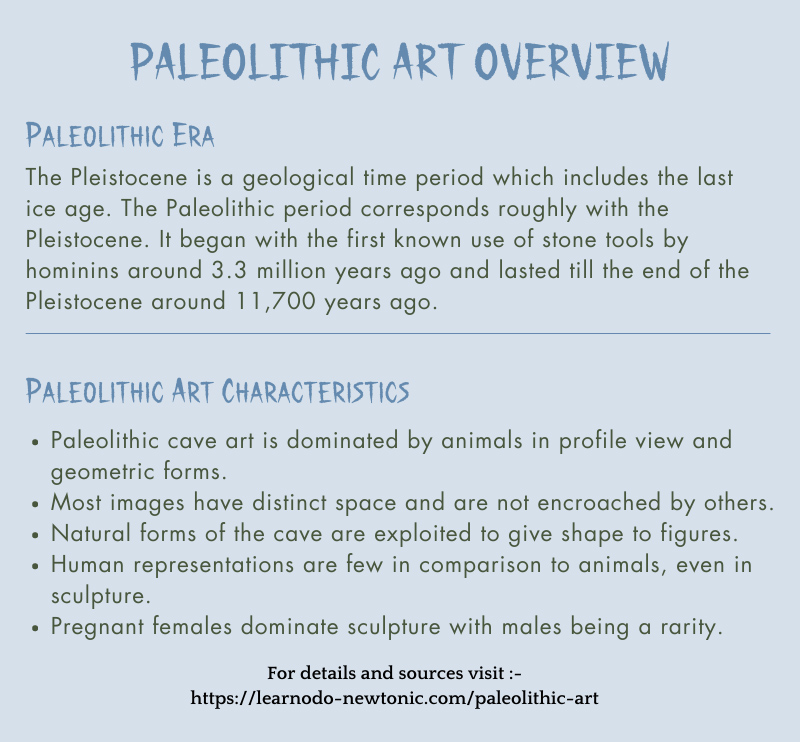
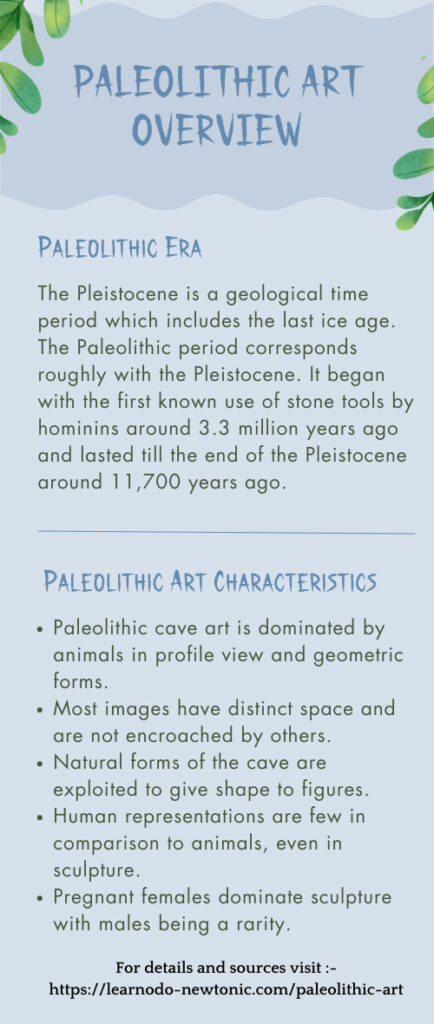
Main Sources
S1:-
“Gorham’s Cave”. The Gibraltar Museum. Internet Archive.
Rincon, Paul. (Sep 1, 2014). “Neanderthal ‘artwork’ found in Gibraltar cave”. BBC.
(Sept 24, 2014). “39,000-Year-Old Neanderthal Engraving Found in Gorham’s Cave”. Sci News.
S2:-
Trinkaus, Erik. (Sep 2, 2014). “A rock engraving made by Neanderthals in Gibraltar”. National Academy of Sciences.
S3:-
(Sept 24, 2014). “39,000-Year-Old Neanderthal Engraving Found in Gorham’s Cave”. Sci News.
Reuters, Thomson. (Sep 1, 2014). “Neanderthals created cave art, researchers discover”. CBC/Radio-Canada.

